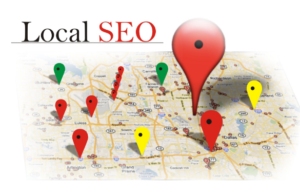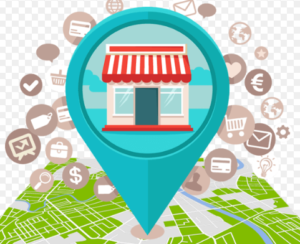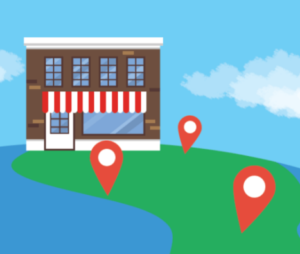One of the most difficult tasks in blogging or content marketing is achieving extraordinary local SEO. And be patient, as extraordinary local SEO results take time.

What is local SEO?
Local SEO is focused on providing results that are relevant to a searcher based on their current location. If I search for ‘best steak restaurant’ on my desktop right now, Google will provide me with results that are nearest to me.
Similar results are delivered if I search on my smartphone.
Local SEO has grown significantly over the last few years, particularly given the rise of smartphone usage and better connectivity while out and about.
Although it has a lot of similarities with organic SEO, it’s ultimately very different.
It has been that over 40% of mobile queries have local intent. According to Fresh Egg in 2013, four out of five people use smartphones to look up local information.
Two in three people take direct action as a result, and one in three people went on to make a purchase.
Google has also recently indicated that one in three US mobile queries is now ‘local’. They also noted 87% of people use their phone when on the go.
Google also found that 95% of mobile users look up local information on their phones and the primary functions are calling or visiting a business.
For Google and other search engines to serve users with the most relevant information, using the vast amount of data they have on us, local based results will become more and more prevalent.
Local SEO … the website is your online shop window
Putting in all the effort that is required for SEO might seem like a hassle. However, as you are putting so much time in local networking, redecorating your shop’s windows and more.
You have to keep in mind that for someone that finds your shop online, it matters what that shop looks like.
Your website is an online replacement for window shopping. If your actual shop is decorated for the season, I would also suggest taking a closer look at how you can translate that to your website.
Make sure people feel welcome, and are enticed to buy your products or services online.
Or at least feel the urge to come by your local business to see what you can do for them.
Set Up Google my business
To start, you need to claim your listing. After that, you can use the following tips to make your My Business account a success.
Keep in mind that everything you add must be in line with the information you provide on your site.
Inaccurate information kills your listings and could kill your rankings:
- Claim your listing with your actual business name
- Choose a category as accurate as possible
- Provide as much data as you can – your profile has to be 100%
- Check your phone number
- Check your opening times – think about the holidays!
- Review your photos – are they accurate and good or can you improve them?
- Create citations on other sites as well – pick well-regarded business listing or review sites and directories, stay away from spammers
- Keep your My Business listing in line with your site – and use Schema.org data
- Above all, keep your data up to date
It’s critical to remember that this is not a set it and forget it type of thing. Things change your business changes.
Keep everything active, monitor reviews and stay on top of things. It’s frustrating if your listing doesn’t perform as well as you’d like, but keep putting in the hours, and it will work.
US businesses can check their listings with this tool by Synup: Google My Business Guidelines Checker.

My Business is Google’s one-stop-shop to manage how your business will look and perform in the search engine.
It is an essential tool to find out and adjust how your site shows in Maps, the Knowledge Graph, Google+ and organic search results.
According to the 2017 edition of Moz’ Local Search Ranking Factors Survey, Google My Business continues to be the biggest driver of local SEO success, with quality links coming in at a close second.
You can manage your business listing by adding NAP details, opening hours, photos et cetera.
In addition to that, it is possible to manage the reviews your customers leave behind. As you know, reviews should be a key factor in your local SEO efforts.
Getting started with My Business is easy; you have to make an account and claim your business.
After filling in your details, you will get a real-life postcard from Google on the address you’ve specified. This card is the only proof you’re the owner of the business listed at the address.
Once verified, you can fill in all the necessary details and check how your listing is doing. You can even get regular insights to see how many impressions, clicks, and subscribers your listing got over a period.
It’s a great way of getting a feel for how your business is perceived by Google and customers alike.
Keep in mind that My Business is not the catch-all tool for your local SEO. It has to work in tandem with your on- and off-site SEO efforts.
You won’t climb the charts if your profile is inaccurate, but you also won’t reach the top without a well-optimized site and localized content. These things go hand in hand.
What you can rank for
Google My Business uses many factors to determine rankings for businesses. We’ll highlight the three most important ones:
- Relevance
- Distance
- Prominence
Relevance
Relevance determines how well your business fits the search intent of the customer.
Is your focus identical to what the customer needs or are you a bit opaque about what your business does?
Vagueness doesn’t rank. Be as clear as you can be. Keep your focus.
Distance
Distance is a well-known factor for ranking local businesses. You can’t rank in a local search for (dentist New Jersey) when you have located your company in Manhattan.
The exact way Google determines which businesses to show in a local search is unknown, and it can be pretty hard to rank in a given area.
The other factors play a significant role as well. It helps not just to say you are located in a particular area, but also to show it by creating local-oriented content around your business on your site.
Google uses what’s known about the location of the searcher to present the most relevant local businesses.
Prominence
Prominence is all about the activity around your listing; this could be the number of reviews, events, local content et cetera.
It also helps if you can get loads of quality links to your site. It is somewhat hard to determine what prominence means exactly, but one thing is sure: no one likes dead profiles.
You have to keep it updated with new photos and manage your reviews. As said before, this works in tandem with your site, so make sure both listings align and that you publish local content.
Local SEO factors … Move on to Google Maps
It is important for your website to appear in Google Maps because you want people to be able to find your contact details.
Perhaps people already know your business, but don’t know the phone number. If you set up your website right, this location data can easily be found through search engines.
More importantly, people often do not know your business yet and are searching globally for terms like “pizza,” “lawyer” or “broker in New York.”
Google often shows a Google Map or a 7-pack for this kind of searches, so it’s of great importance that your business is listed there!
The first thing you have to do to get your website in Google Maps is to have a physical location for your business. That sounds silly, but this is one of the major requirements to get you listed in search engines.
It’s hard to rank on “divorce lawyer Boston” if your business isn’t physically located in Boston (even if you provide services there). After you have a physical location of your business, you can sign up for your business in the search engines: Google, Bing and now even Apple.
The third thing you have to think of is your SEO strategy!
Just like regular SEO, Local SEO exists both on the page and off-page SEO. For on-page SEO it’s important, you mention the address of your business on your website in Schema.org format.
And not only on your contact page, but it’s also recommended to place it in the header or footer of your website, so it’s visible on every page.
Besides the address itself, the title tag is something you need to look at. According to the Local Search Ranking Factors naming the City and State, besides your keyword, in your page title is the most important thing to do.
A good format would be “<your service> <city> <state>,” for example, “Shiny Teeth dentist Portland Oregon.” It’s pretty straightforward but clear and strong!
But don’t take this format for granted. Play with it and, even better, by testing it!
For off-page SEO, links from other sites are of course important, but also the so-called citations.
Citations are just mentions of your business, which don’t even have to contain a link to your website. For example, you can get citations from people who review your business (like Hotfrog, Yelp, Tripadvisor, etc.).
Small business blogging
The easiest way to keep your customers (and others) in the loop about your products and offerings, is by adding a blog to your website.
That blog will fuel your social media and newsletter, so it’s a much more extensive tool than ‘just an addition’ to your site.
Facebook and other social media listings
If there is one thing I can tell you from my experience in this, it is that local small businesses communicate a lot via social media.
Use that Twitter account actively, set up your Facebook page and maintain it. Add your business to Google Business and make sure your opening hours are filled out if you have any.
Every Google search for your company or closely related searches might show these immediately, before any organic search results.
The same goes for sites like Yelp or TripAdvisor. They have their marketers working 24/7. In the end, it doesn’t matter if people find your business through websites like Yelp or Google, right?
Employ local directories
Next to your Google My Business listing, Google uses the local Yelp and other local directories to determine just how important and local you are. Where we usually recommend against putting your link on a page with a gazillion unrelated links, the common ground for a local listings page is, indeed, the location.
And these links do help your local rankings.
So get your web team to work, find the most important local directory pages and get your details up there.
I’m specifically writing details and not just links. Citations work in confirming the address to both Google and visitors.
If a local, relevant website lists addresses, get yours up there as well. And while you are at it, get some positive reviews on sites like Yelp as well, obviously!

Create word of mouth buzz
Create a buzz around your shop, for instance by asking people to leave a review on Google Business or Yelp.
Do sweepstakes or giveaways for your online visitors. 500 likes on Facebook? Give number 500 a coupon for your shop, online or offline.
Have a sale for a specific brand? You could consider promoting it online only. Sponsoring a local event?
Be sure to set up an event-specific landing page and ask them to link that one.
These are all little things that might trigger people to talk about your website, next to your shop.
Offline platforms
New website? Contact your local newspaper. New products? Contact your local newspaper. New business? You get the drift.
Do not underestimate the reach these local news companies have. People read these publications.
If you have anything newsworthy, please contact these publishers and see if they can help you to promote your business offline.
If you participate in a local event, by all means, add a blog post to your website as well. Just be sure it is relevant.
The bottom line
The examples of marketing are all around us. All we have to do is be open-minded in how we look and how we apply the best lessons learned.
Now it’s your turn. What are the creative marketing ideas you have seen lately?
